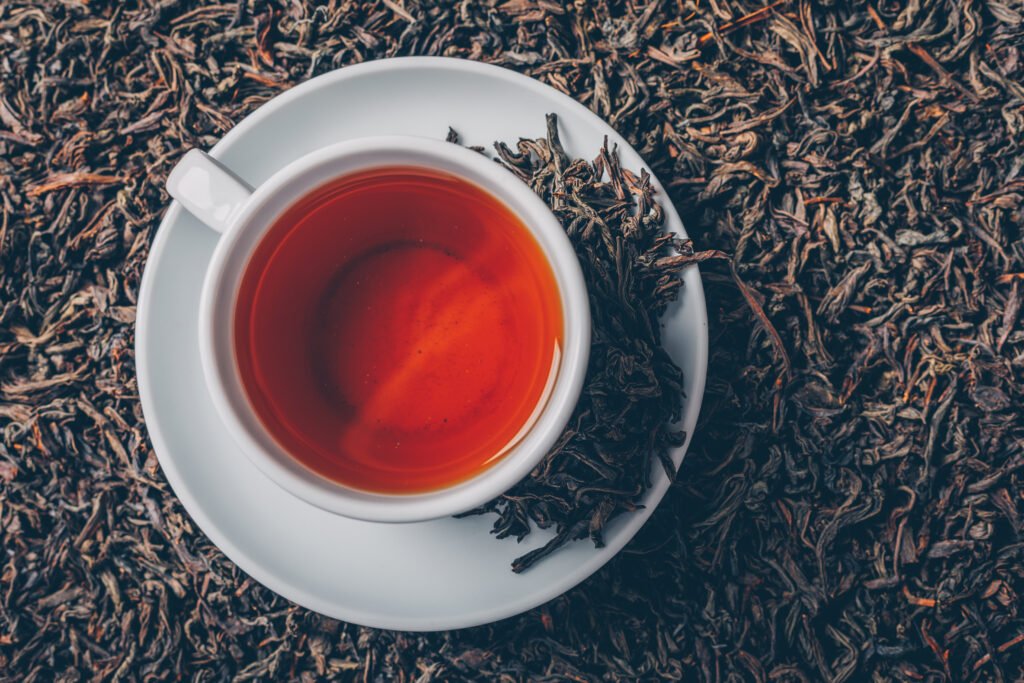Red tea, also known as Pu-erh, is an ancient variety of tea originating from the Yunnan region in China. Over the centuries, it has been valued both for its distinctive flavor and its medicinal properties. In this article, we will explore red tea in depth and its connection to weight loss, uncovering the benefits it offers as a natural option for those looking to achieve their weight loss goals in a healthy way.
Red tea dates back over 2,000 years, making it one of the oldest teas in the world. Originating from Yunnan Province in China, it is notable for its special fermentation process, which gives it its earthy and distinctive flavor.
It contains natural compounds that provide its weight loss benefits. Among them are polyphenols, antioxidants, and catechins, which help accelerate metabolism, promote fat burning, and reduce lipid absorption in the body. Red tea has also been found to help control appetite and improve digestion.
Some studies suggest that red tea can help suppress appetite and reduce cravings, which may contribute to lower calorie intake. Additionally, red tea has mild diuretic properties, helping to eliminate excess fluids from the body and reduce bloating.
To maximize the benefits of red tea for weight loss, it is recommended to incorporate it as part of a balanced diet and a healthy lifestyle. It can be consumed hot or cold, and comes in various forms, such as tea bags or loose leaf tea.
In conclusion, red tea is a natural and healthy option for those looking to lose weight effectively. With its long history and benefits supported by scientific research, red tea stands out as a valuable ally on the journey to weight loss. Always remember to consult a healthcare professional before making significant changes to your diet or starting any weight loss program.
References:
Chen, H., Han, M., Li, X., Wang, Q., & Chen, H. (2015). Beneficial effects of pu-erh tea on hyperlipidemia and fatty liver in rats. Asia Pacific Journal of Clinical Nutrition, 24(Suppl 1), S100-S106.
Liu, Z., Xie, W., Zhu, D., Zhang, L., Zhang, J., & Liu, Y. (2013). Pu-erh tea has in vitro anticancer activity in TCA8113 cells and preventive effects on buccal mucosa cancer in U14 cells injected mice in vivo. Nutrition and Cancer, 65(1), 23-33.
Yang, Y., Xie, X., & Jia, L. (2016). Pu-erh tea, green tea, and black tea suppresses hyperglycemia, hyperlipidemia, and hyperinsulinemia in high fat-fed, high sucrose-induced metabolic syndrome rats. Journal of Agricultural and Food Chemistry, 64(45), 8681-8689.
Hsu, C. H., Liao, Y. L., Lin, S. C., Tsai, T. H., Huang, C. J., & Chou, P. (2007). Does supplementation with green tea extract improve insulin resistance in obese type 2 diabetics? A randomized, double-blind, and placebo-controlled clinical trial. Alternative Medicine Review, 12(3), 269-277.
Diepvens, K., Kovacs, E. M., Vogels, N., & Westerterp-Plantenga, M. S. (2007). Metabolic effects of green tea and of phases of weight loss. Physiology & Behavior, 93(3), 486-491.




